|
Driving off
the main highway seen in the background here, is an area loaded
with Naco marine limestone. Most fossils are ground up and not
too well preserved, however there are eroded out loose fossils
everywhere.
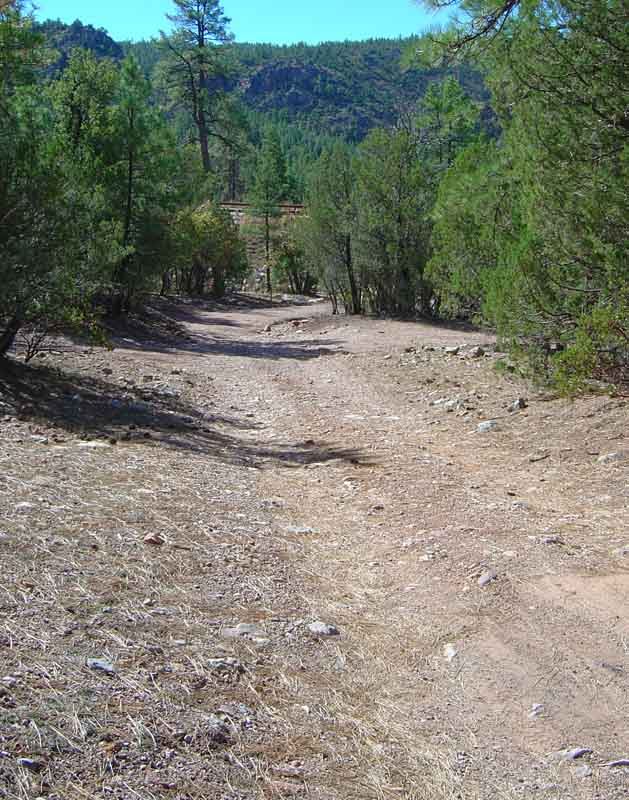
Dawn collects tons
of brachs (Composita) and Bryozoans (Fenestellid and branching)
in the road in, next to the pond and under the power lines. Fossils
are often preserved as calcified casts and molds in both the
slabs and loose in the soil.
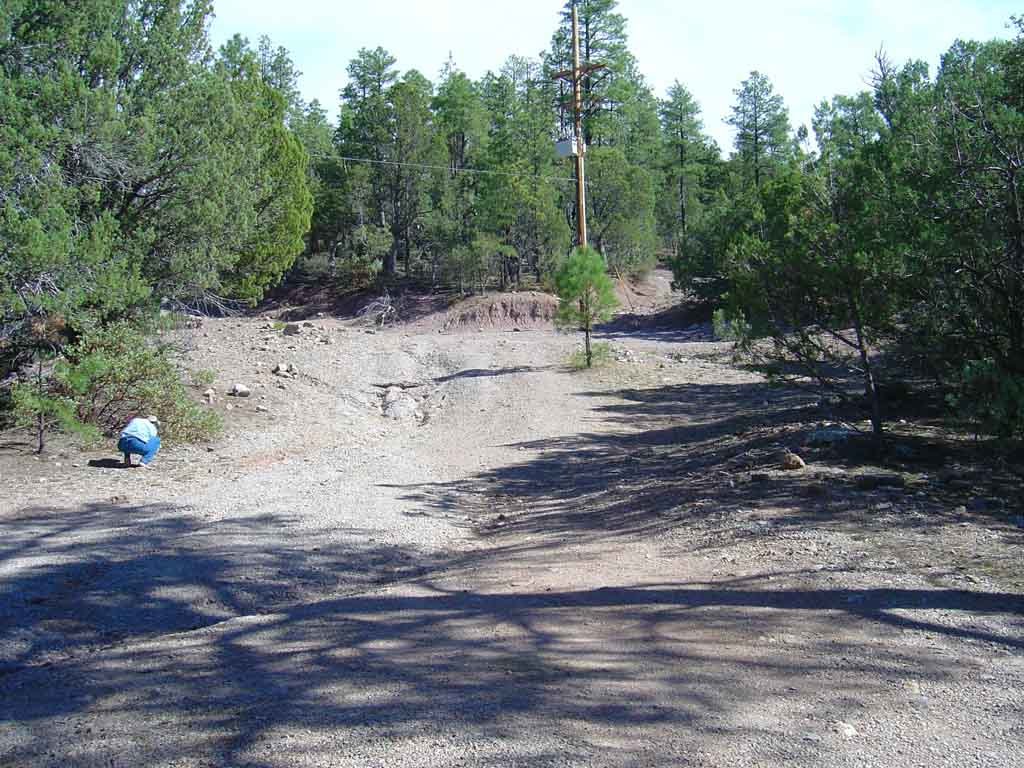
Next to the pond,
we find slabs of limestone loaded with crinoid material. Occasional
sharks teeth about a quarter of an inch long are found here as
well. They are original bone material, and pass the "lick
and stick" test...
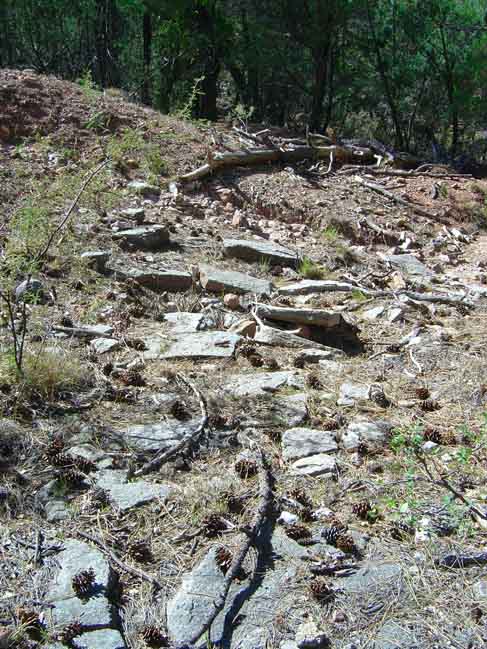
Close up of slab
made of crinoid parts.
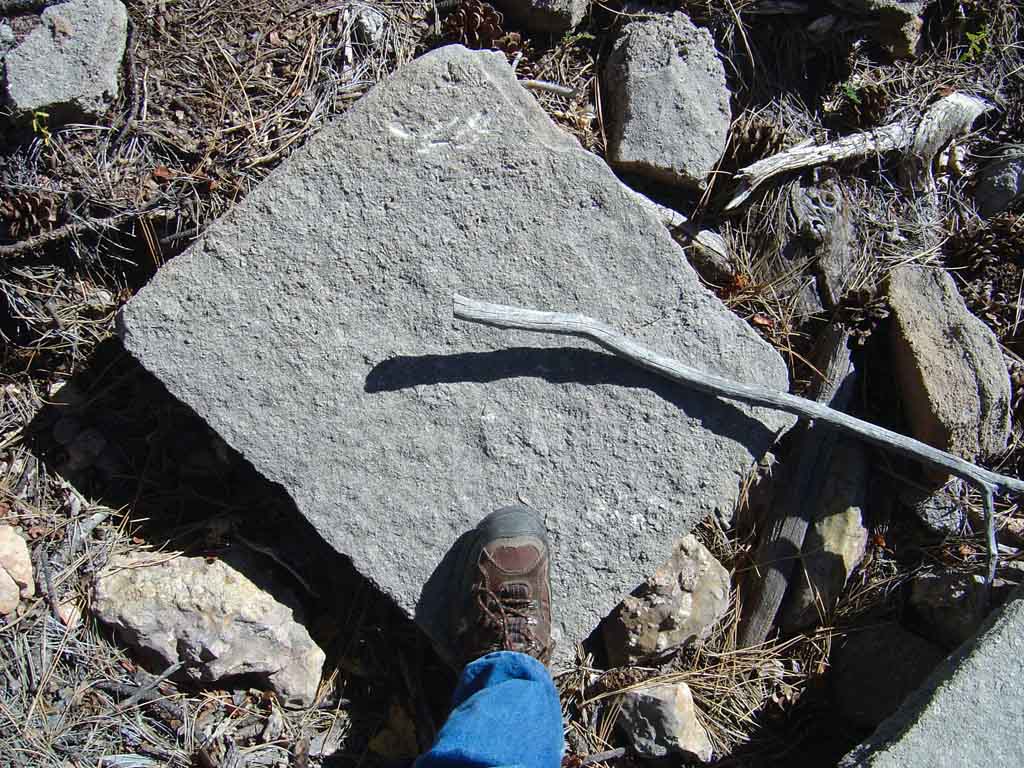
Detailed close
up showing millions of crinoid calyx parts, including an occasional
shark tooth or fish scale.
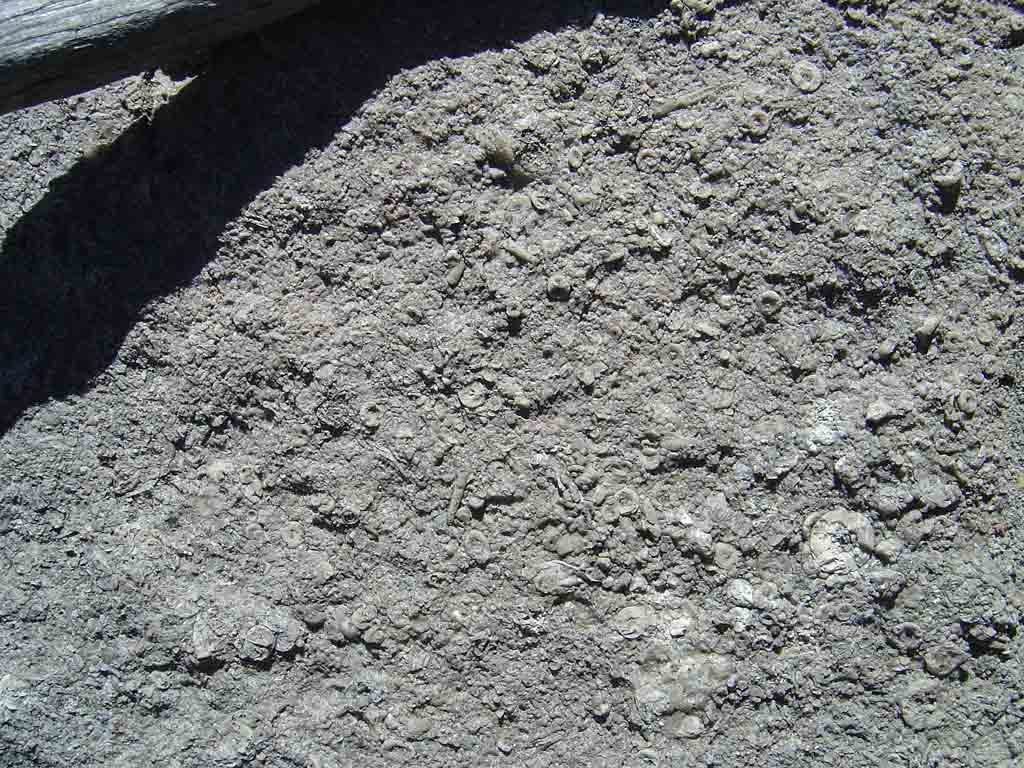
After a harrowing
drive in along a mile long really challenging road, we arrived.
We parked in a flat area next to the quarry and began our search.
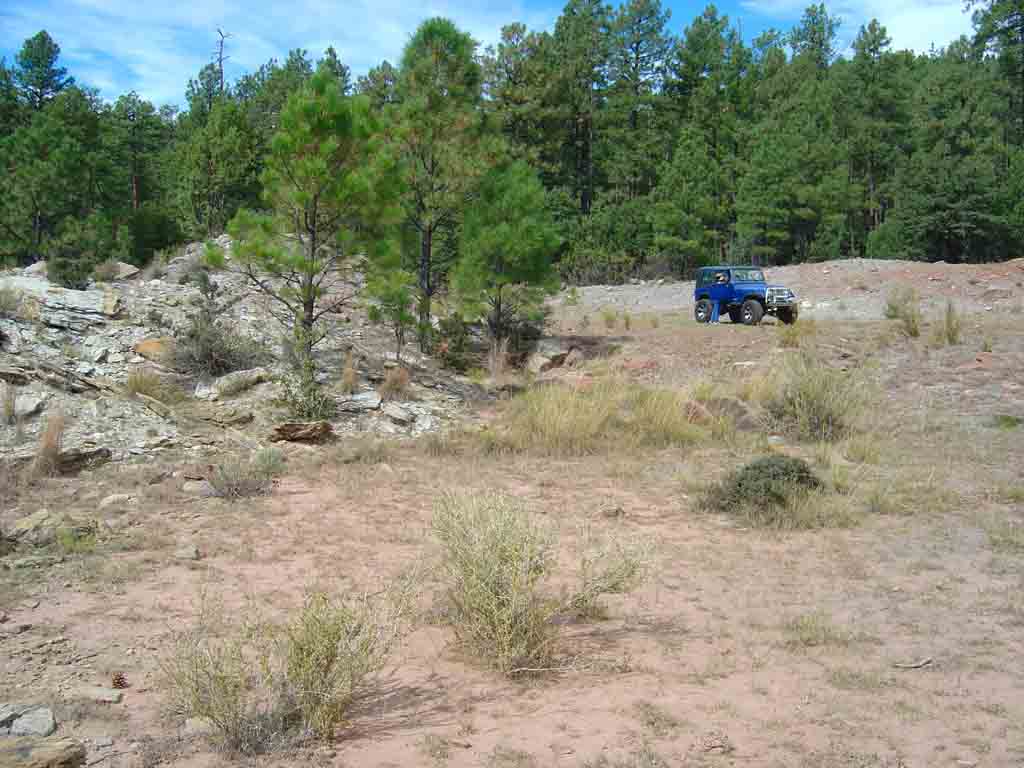
Heading toward
the quarry, looking back, you can see that all the huge piles
of radioactive sand stone are now gone! The area is smoothed
out so they are most likely buried there underground. This used
to be a nice source of carbonized wood casts and limbs. I did
take a Geiger counter to the pile one time, and found little
to be concerned about. Apparently this is what they were mining.
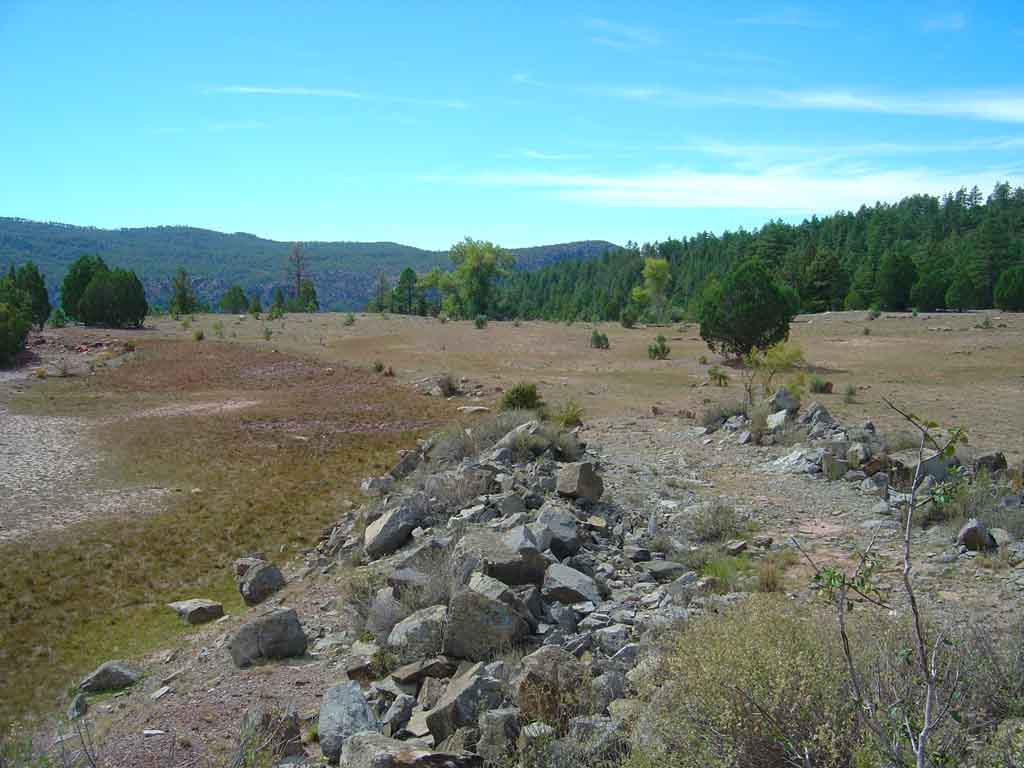
The main quarry
area. At the top of the photo is the Mogollon Rim way in the
background, Milk Ranch point. The upper wall of the quarry is
Naco, and grades down into a redder terrestrial fresh water shale
and sandstone. This particular facies only occurs in isolated
outcrops on the Rim. It is NOT typical Schnebly Hill formation
(Like Sedona). Although not physically connected to the Grand
Canyon deposits, it is mot likely based on fossil content to
be an outlier of the Supai Group. The white mound on the right
is a lake deposit, with few fossils. The plant material comes
from the left side here, the coaly shores of swamp land for this
freshwater lake.
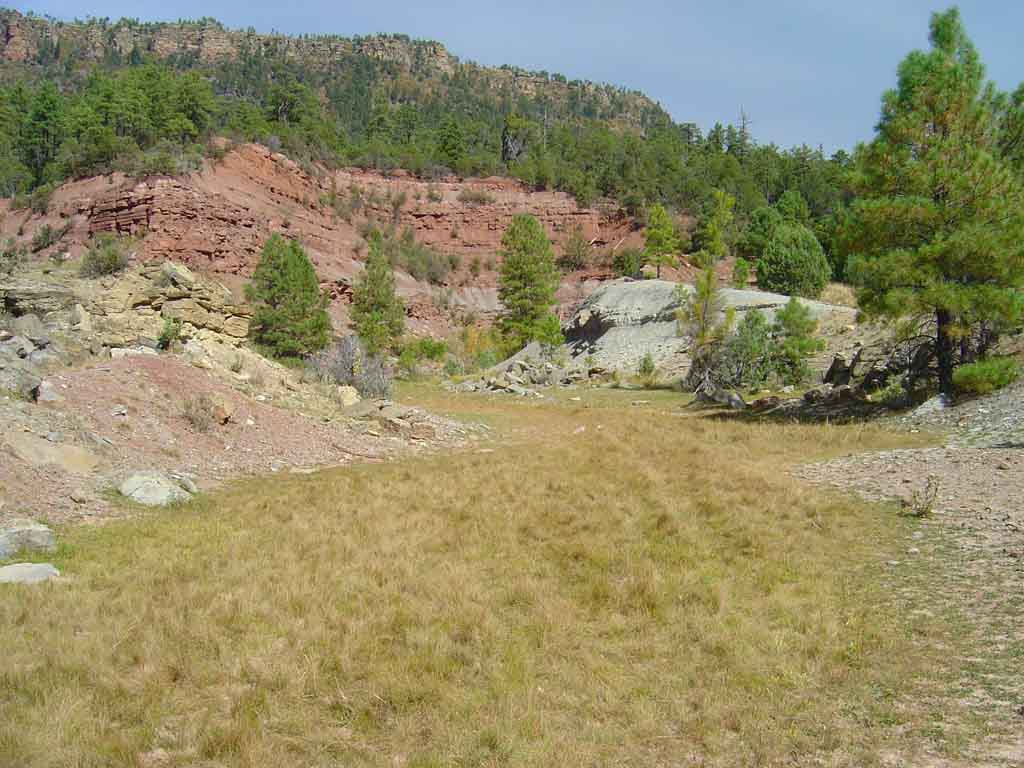
Hiking up through
the layers inside the quarry, this is the one of the plant coaly
shale layers which can produce nice specimens - IF the moisture
content is high. Otherwise the fossils shatter when you try to
split the dry shales.
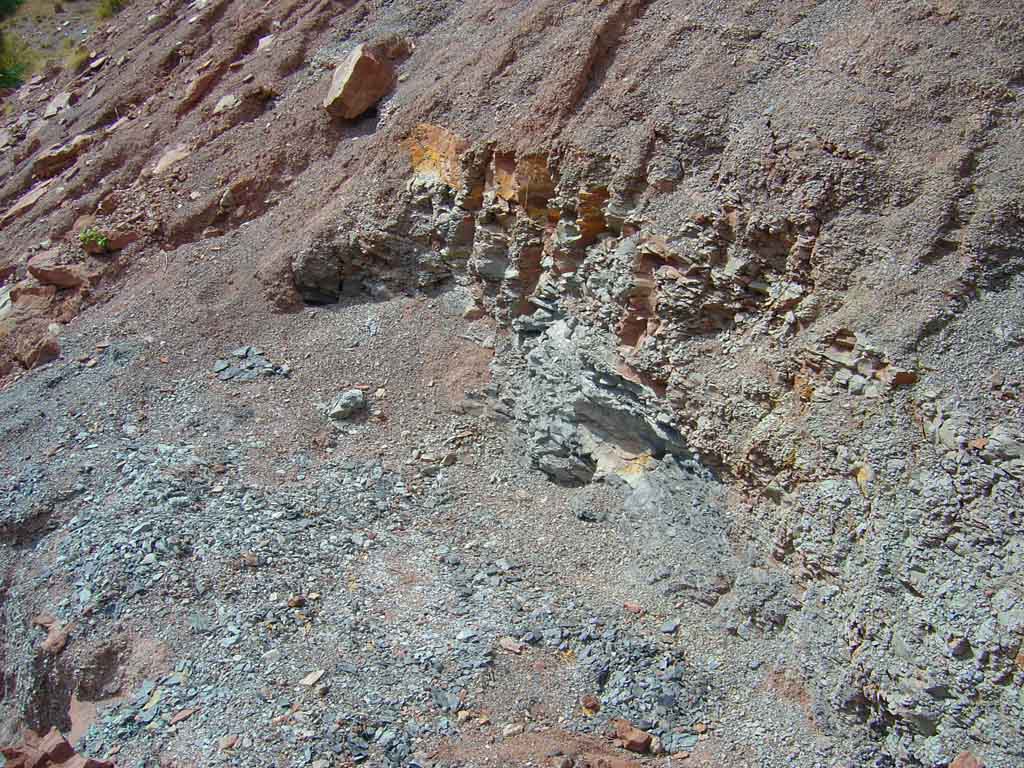
The bottom of the
quarry used to have a big pond in it years ago, but now is dry.
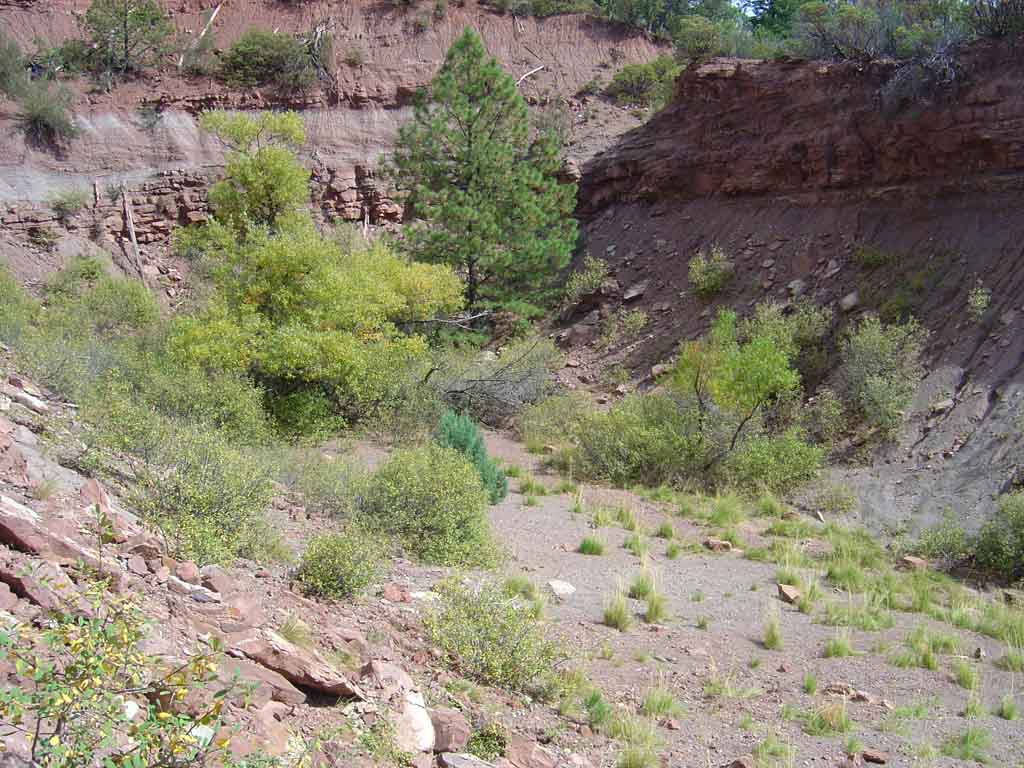
From inside the
main quarry looking out.
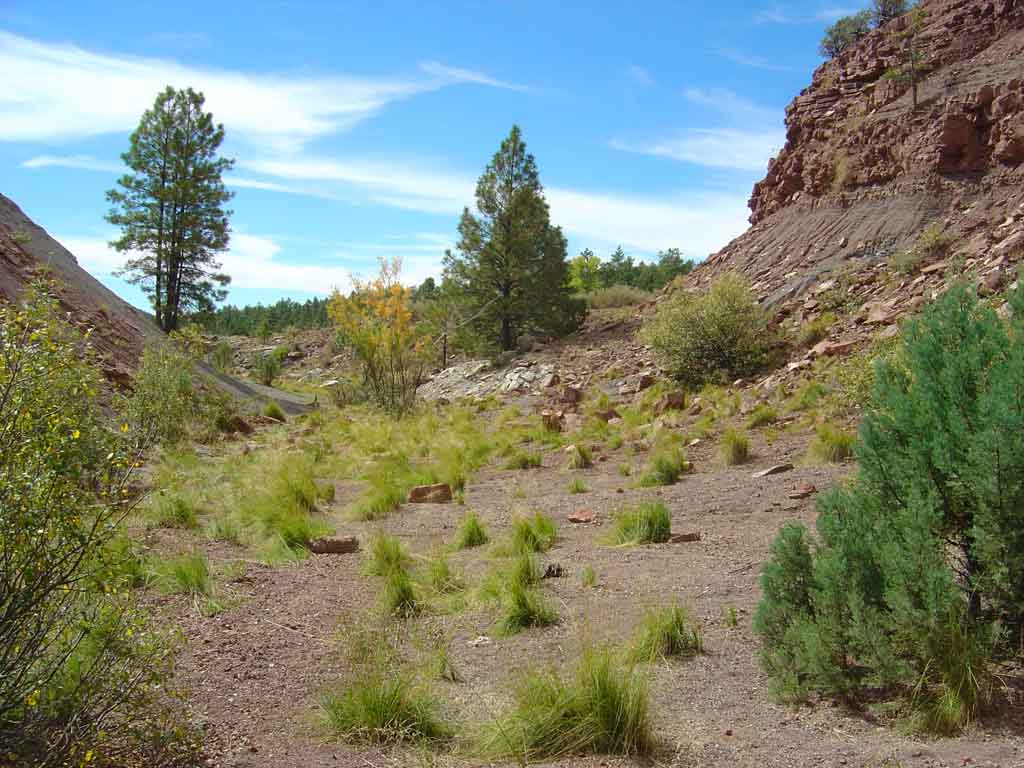
Here, Ive marked
the shale bed with the best plant material.
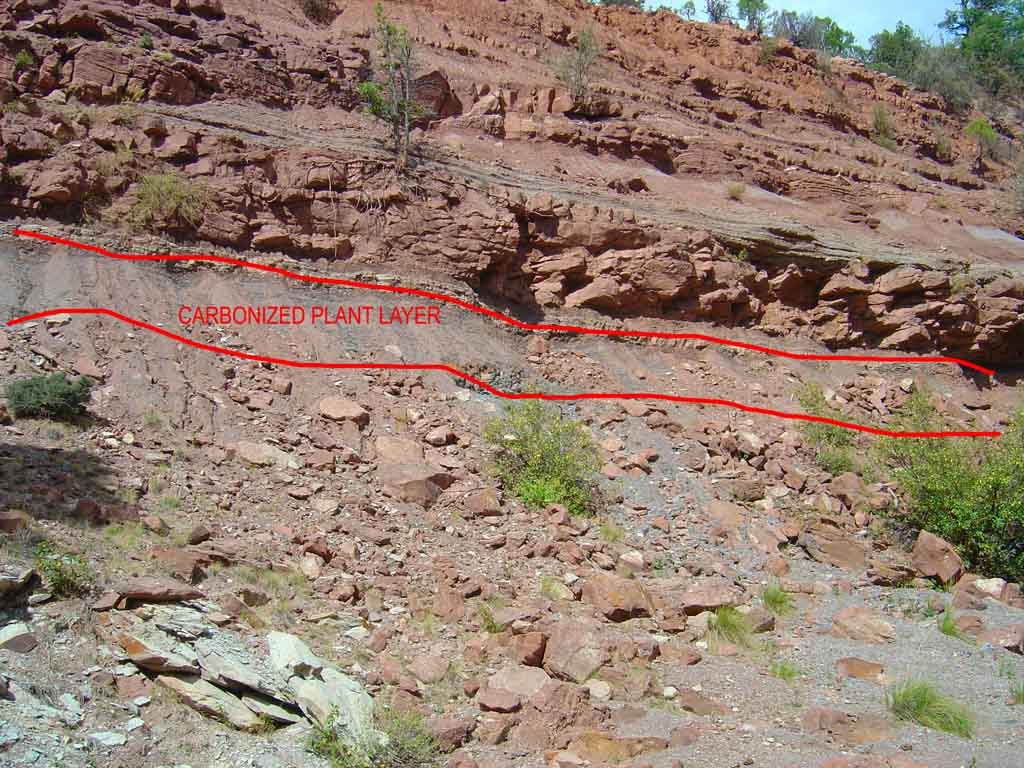
Starting the treacherous
drive out!
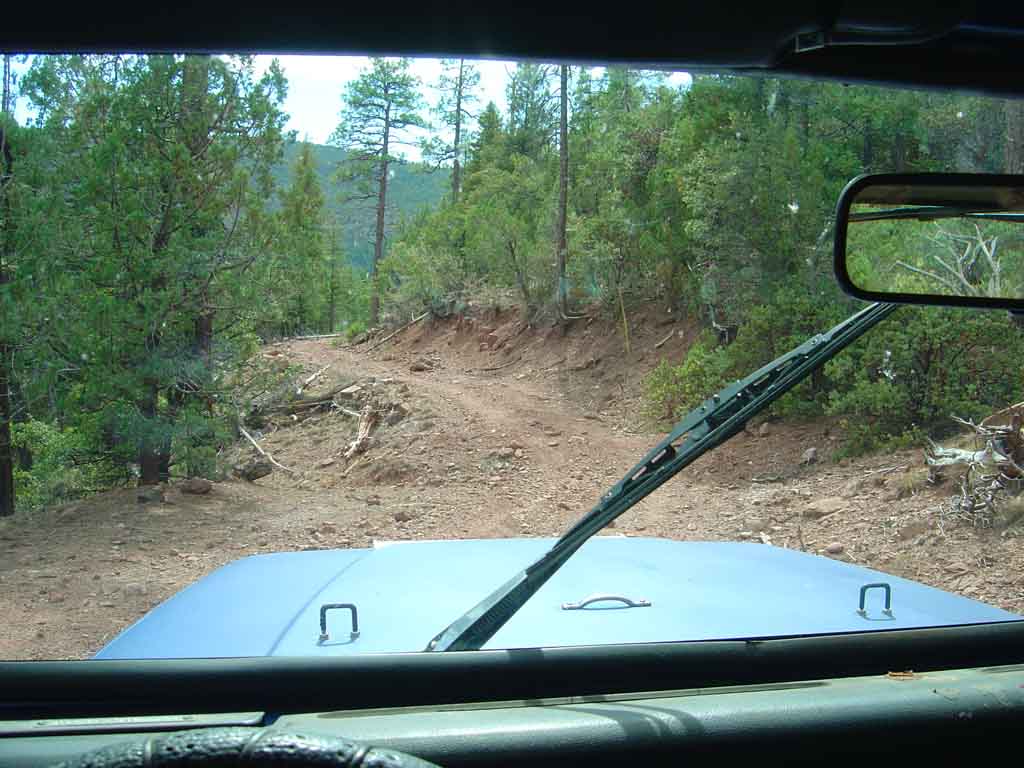
Yes, this IS the
road out. Giant horse sized boulders are now spread all over
the road.
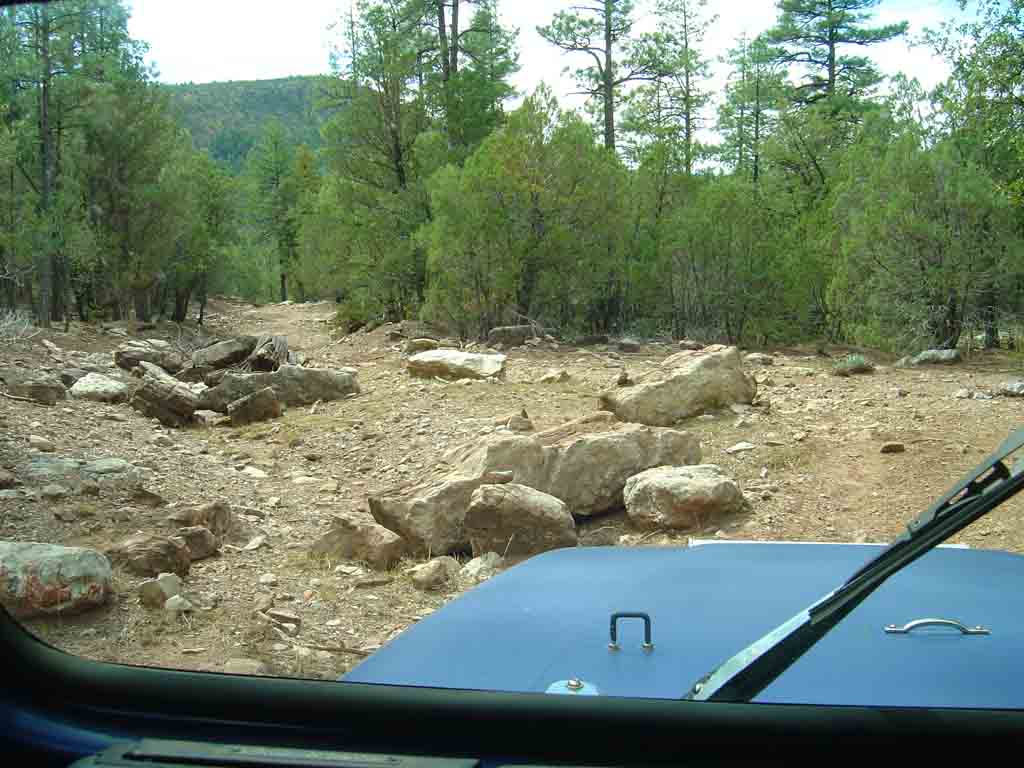
It was very tricky,
but not impossible to four wheel out of this mess. We have taken
our Jeep on some of the worst roads imaginable to get to fossil
in Arizona. Only a few are as bad as this one!
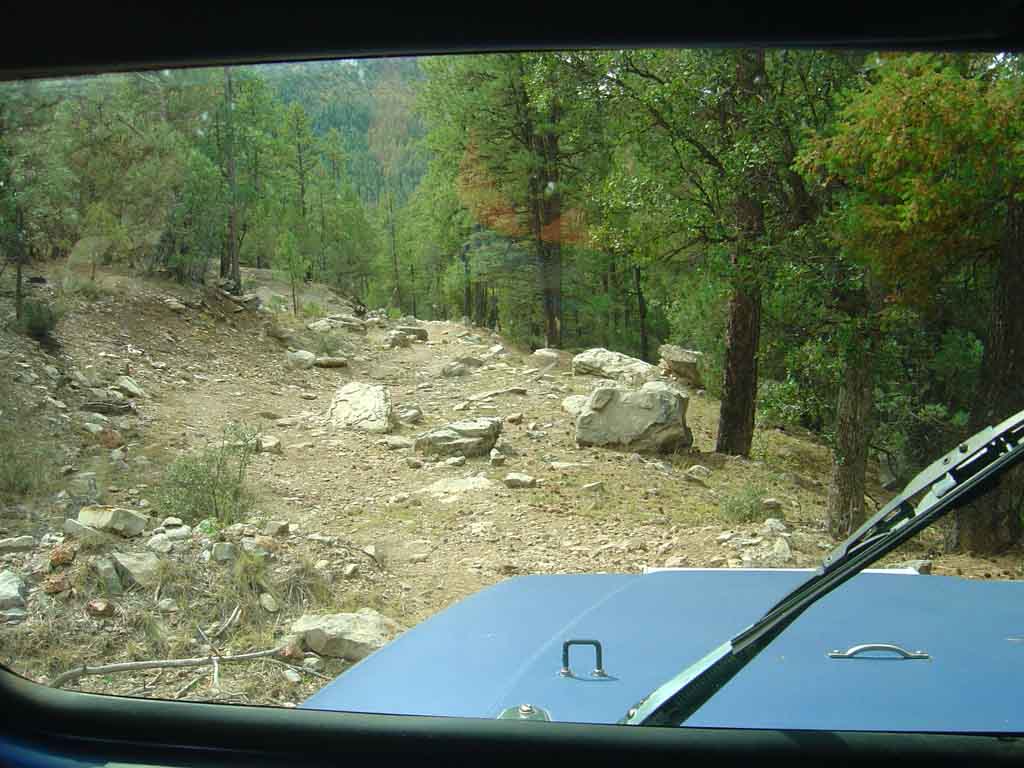
Photos
of the material collected at the Quarry and entrance road:
There is huge amounts
of pyrite crystals and nodule found in the quarry. This is from
the diagenesis of the organics (primarily ammonia) and forms
the pyrite from the existing iron compounds in the original muds.
The process forms FeS and we have found several different crystal
types here.
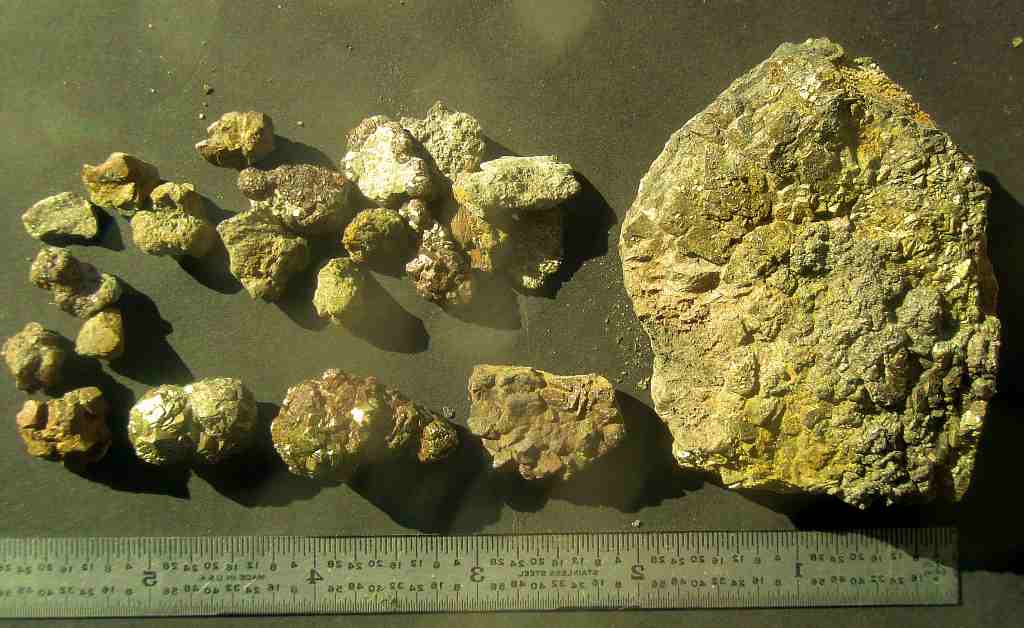
Everything you
see here is a thick chunk of coal. Most layers are less than
2 inches thick, and contain abundant limb casts as seen on s
ome of the specimens here.
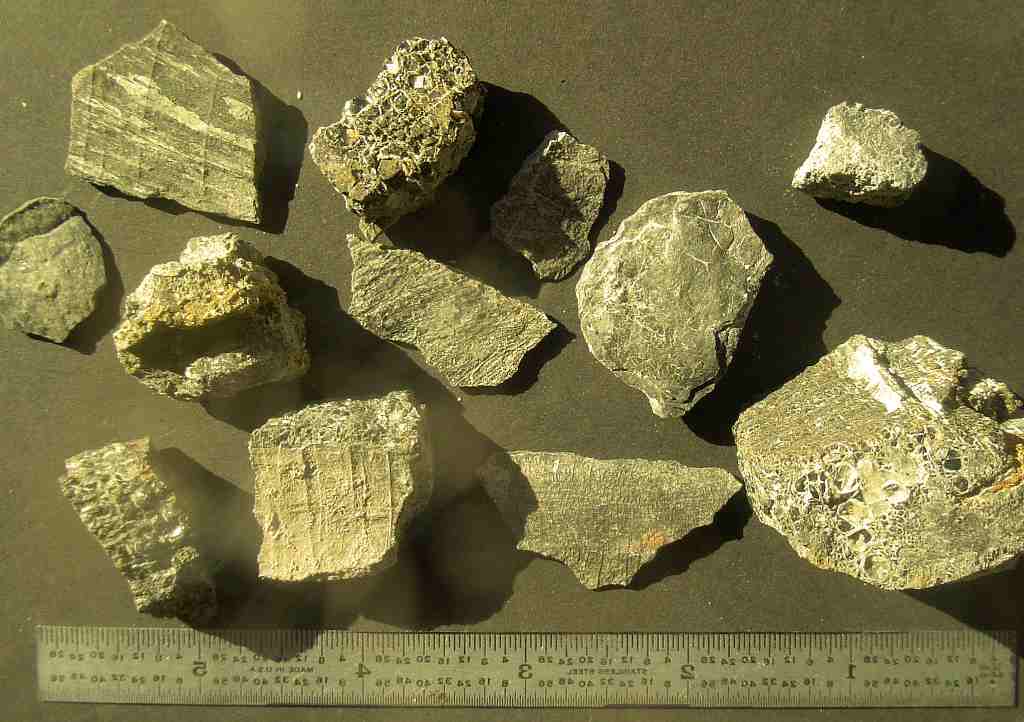
The shales above
and below the coal beds are in places very fossiliferous. Most
is ground up plant hash, but sometimes you will find complete
leaves and reed impressions. Rarely fern fronds and lycopod leaves
and seeds.
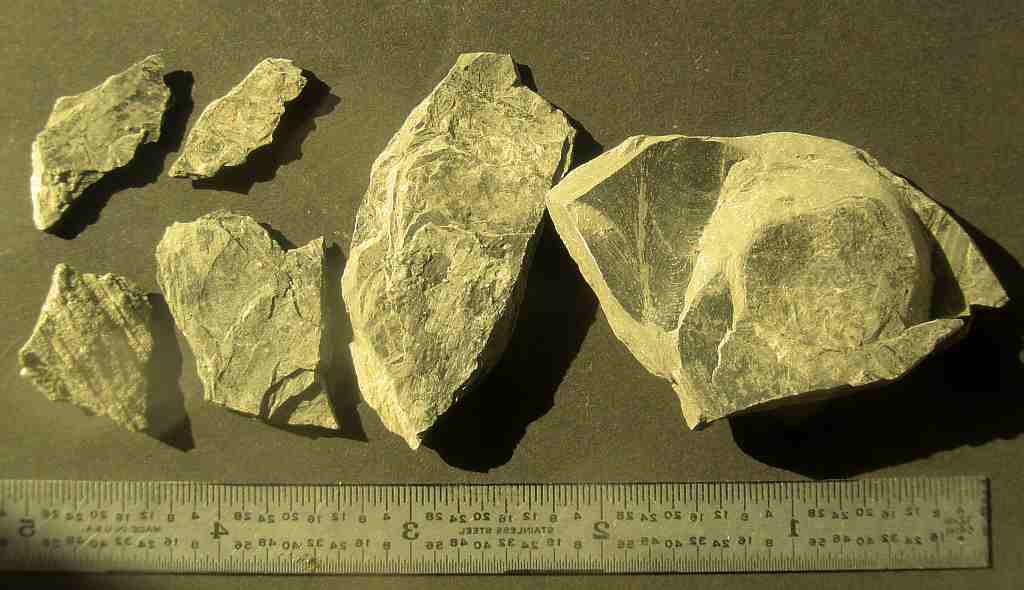
Shark coprolites.
We have collected countless specimens from this site. It is unique
to the bed found, and no other fossils are in that same facies.
The spiral pattern is typical of xanthid sharks, a small 2 foot
long freshwater fish which occupied the lake during this time.
More details on this later...

Microscope
photos.
This set of images
are taken with my stereo microscope and a 5 MP Sony digital camera.
The magnification here is mostly set for 10x. It will do fine
images at 40x as well.
The base of a leaf
is seen here, preserved as a carbon film.
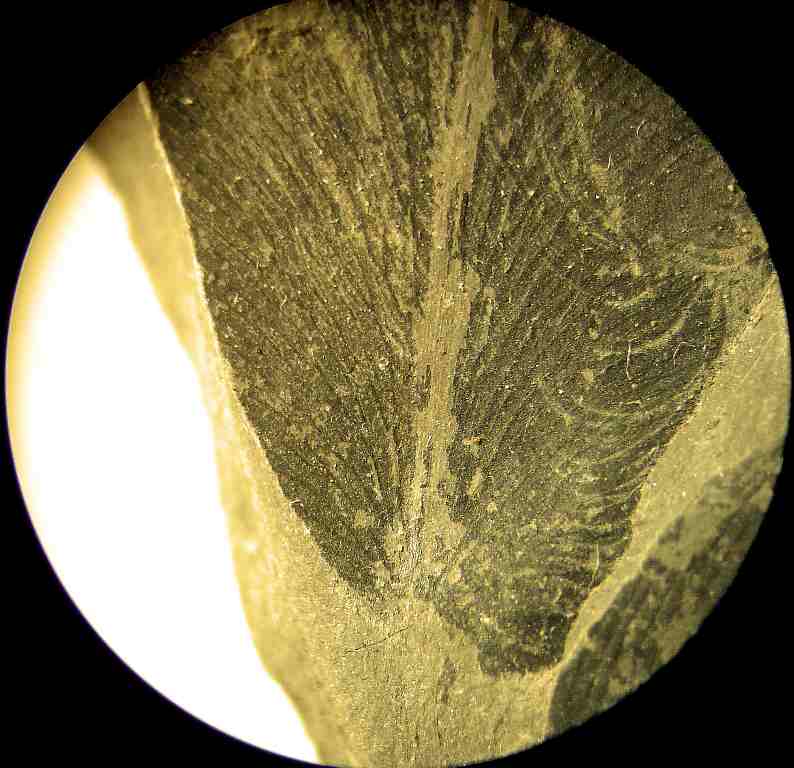
External limb cast
impression of a small tree like plant.
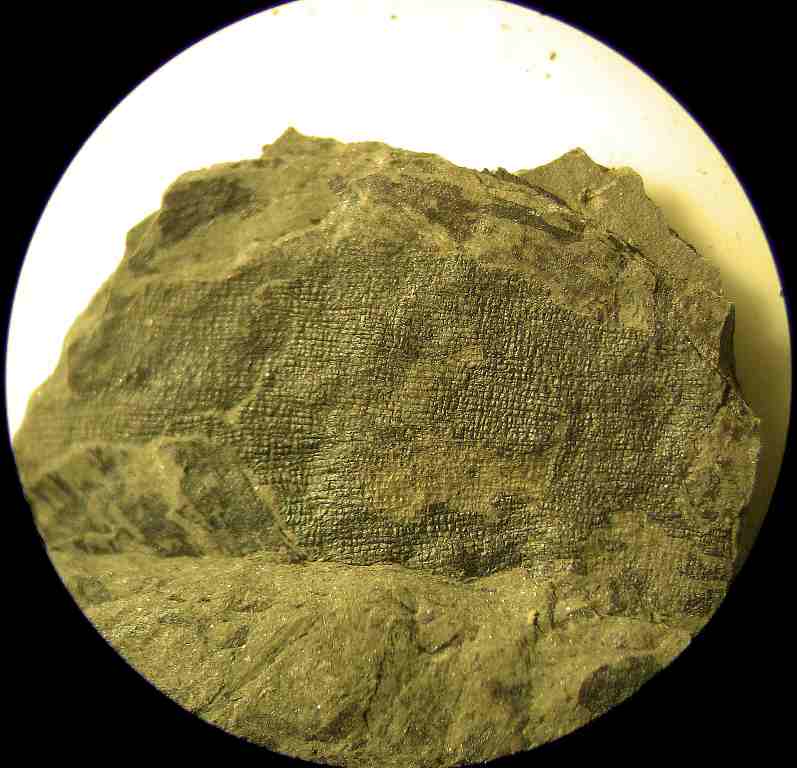
Cordiates leaves
are very common here, they are originally long a strap like from
a tall tree like a palm.
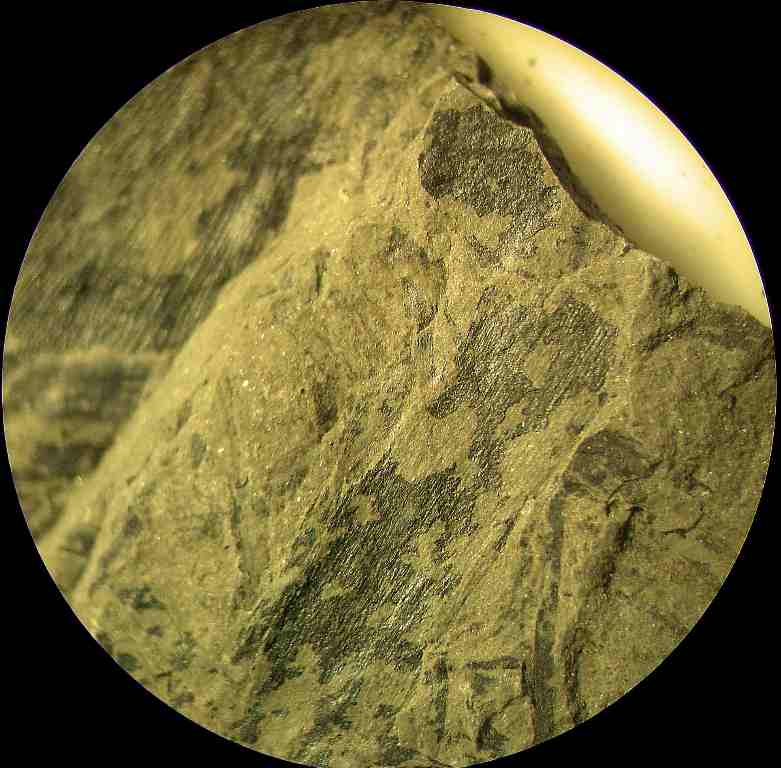
Typical plant hash
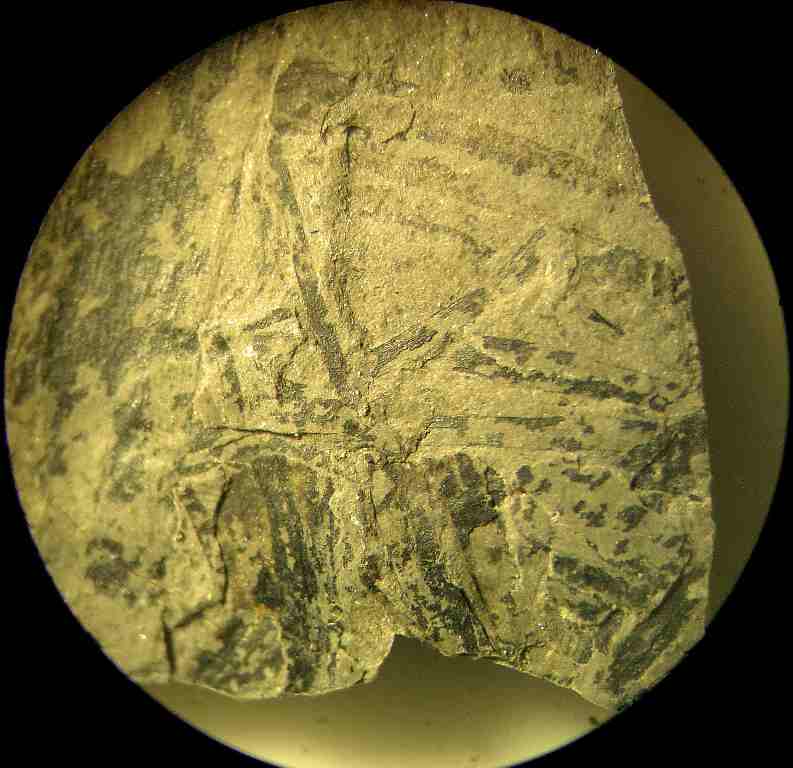
Another bark/limb
cast, perhaps of a Cordiates tree.
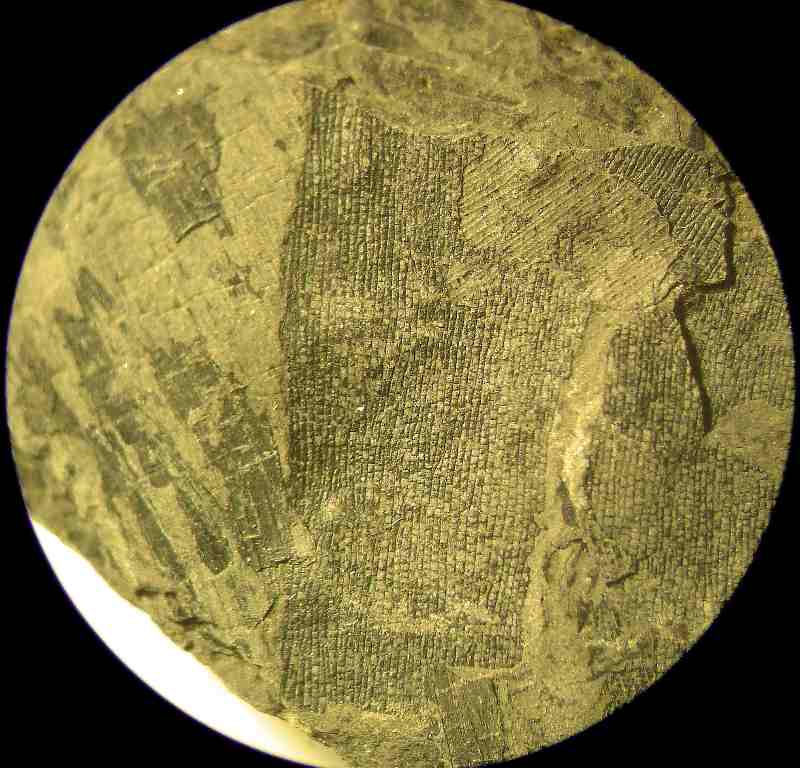
Another probably
Cordiates leaf
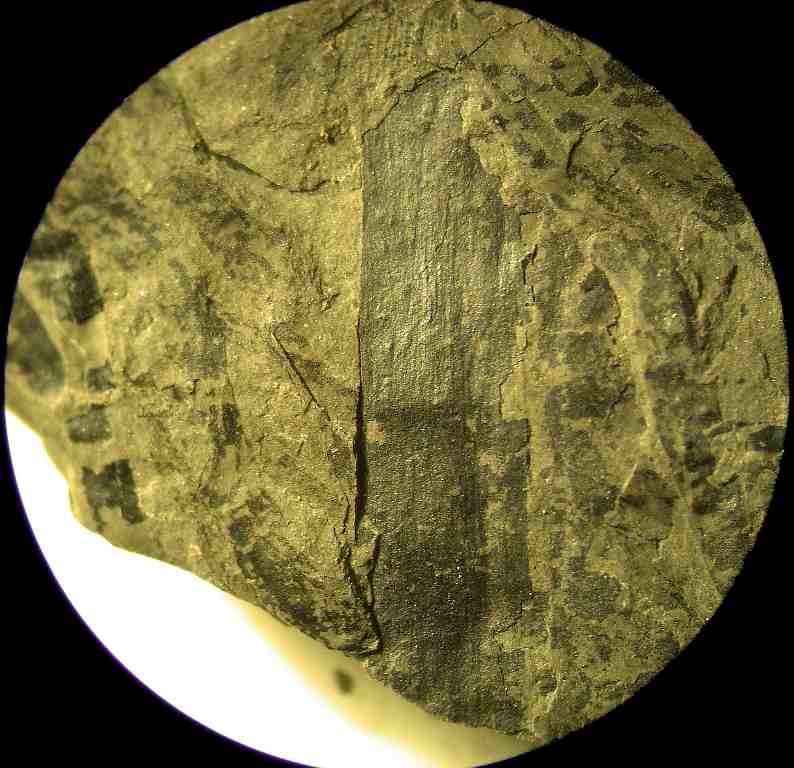
This is the most
likely candidate for the shark coprolites. A small Xenacanthus
in the freshwater next to the bog was responsible for the fossils
we found. They would have eaten small fish and amphibians, and
no doubt some turtle like animals are waiting to be found in
the same layers.

Close up of the
termination of the shark coprolite.

The spiral pattern
seen in shark coprolites is due to the very unusual and unique
construction of their internal gut. There is no other animal
that makes such patterns.
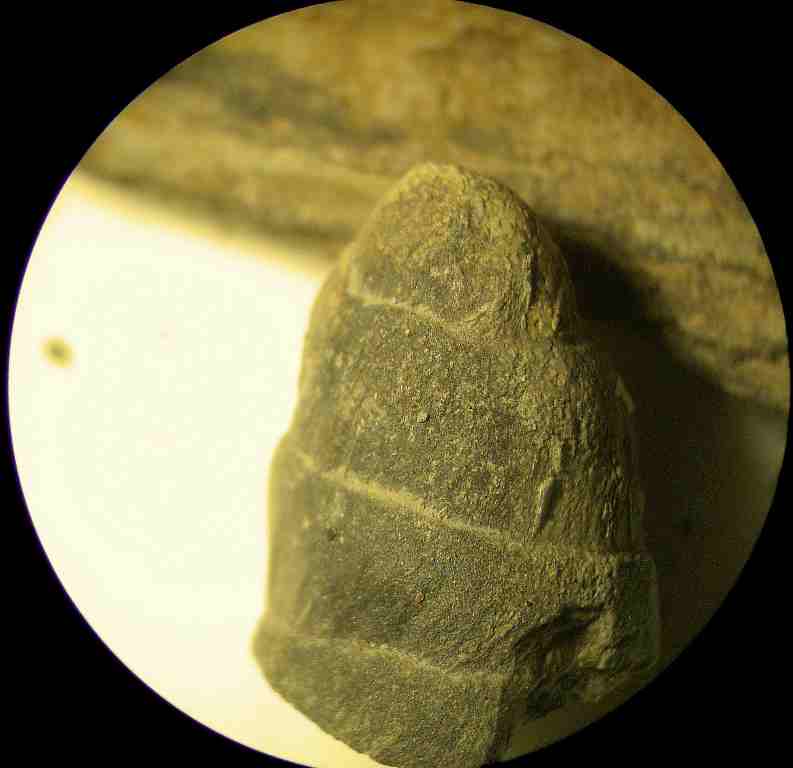
Malachite copper
ore found coating some of the plant remains. We have found in
other nearby localities many more examples of this, including
malachite and azurite coated Calemites limbs, and one diamond
patterned lycopod bark piece covered in the green mineral. The
prize find was an azurite limb cast from a horse tail reed cast.
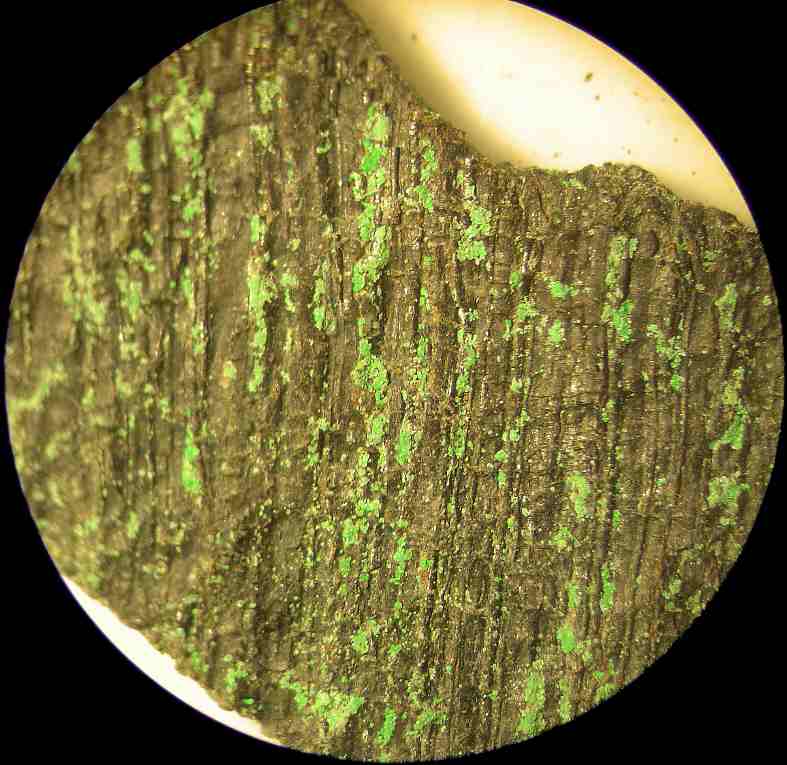
Coal layer - surface
appearance
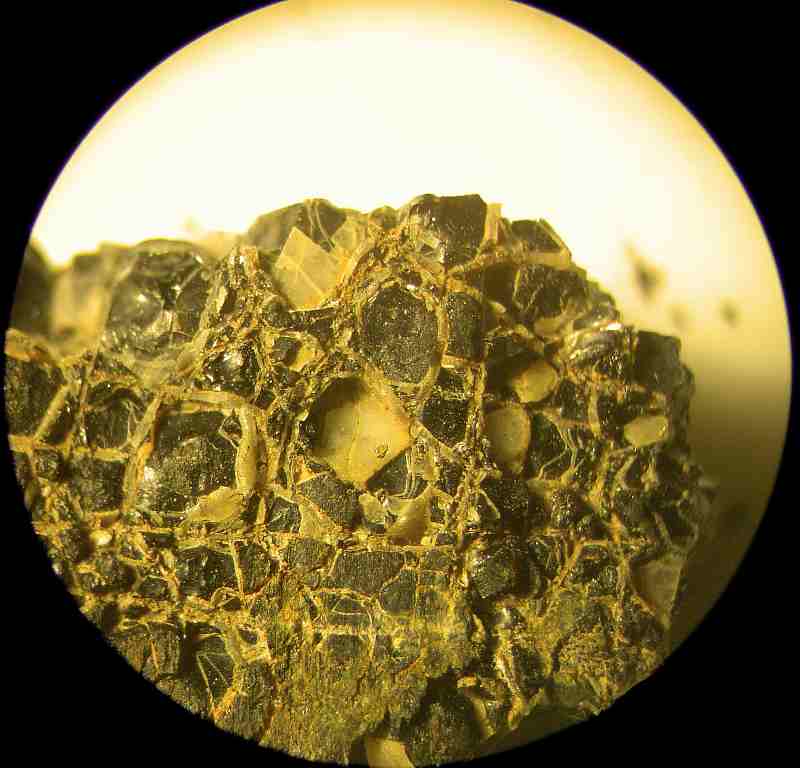
Pyrite crystals
- Cubic
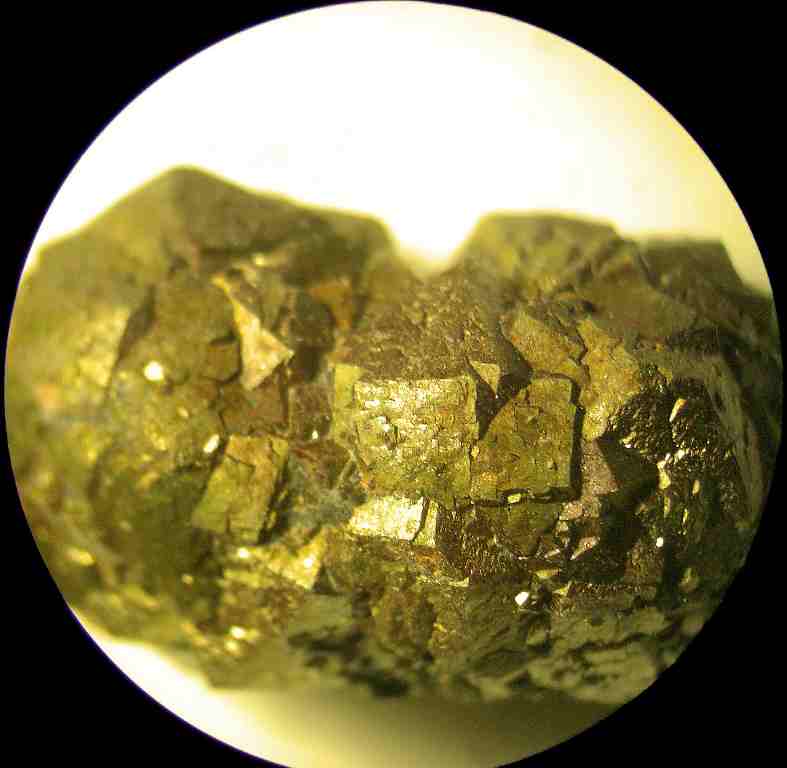
Pyrite crystals
- Octahedrons
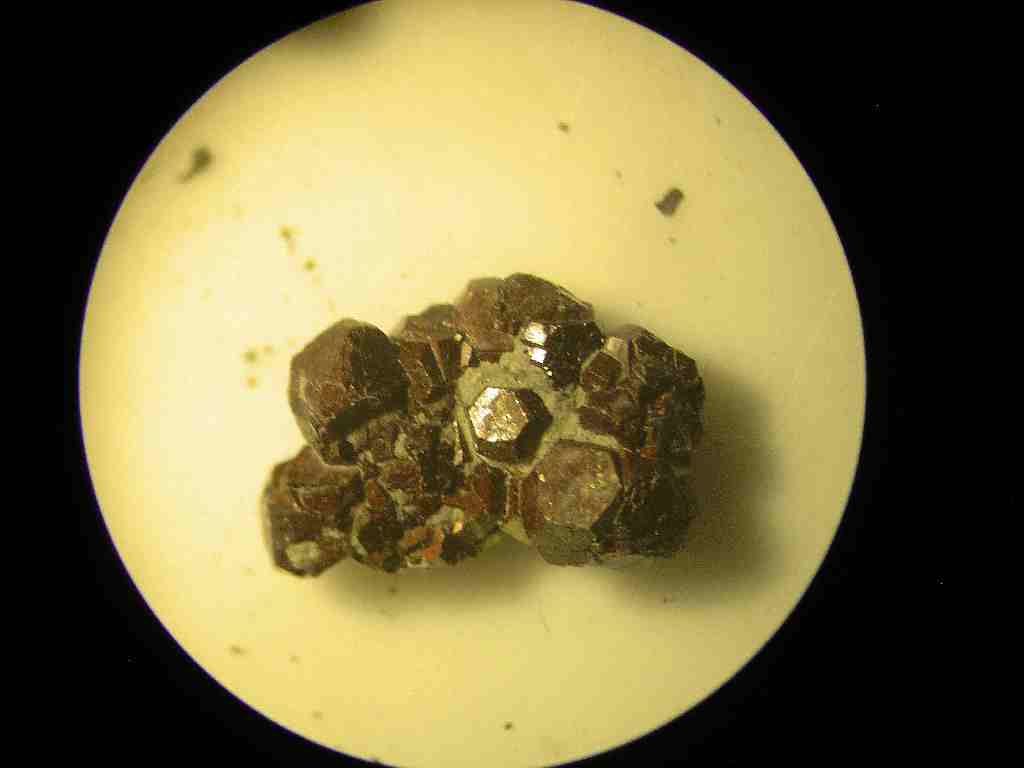
Pyrite crystals
- triangular faces
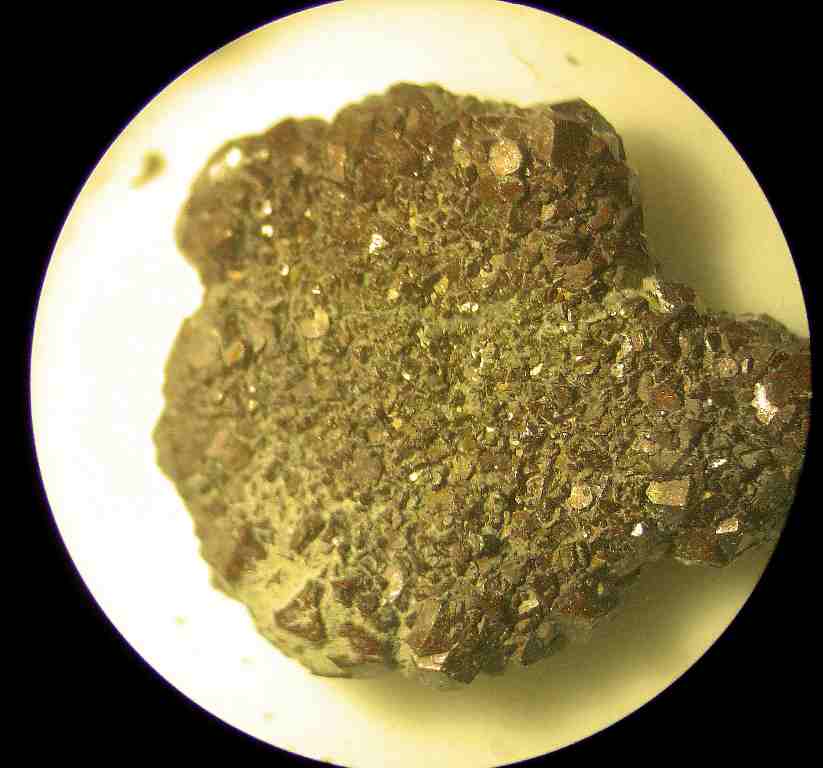
Close up at 20x
of triangular faces.

|